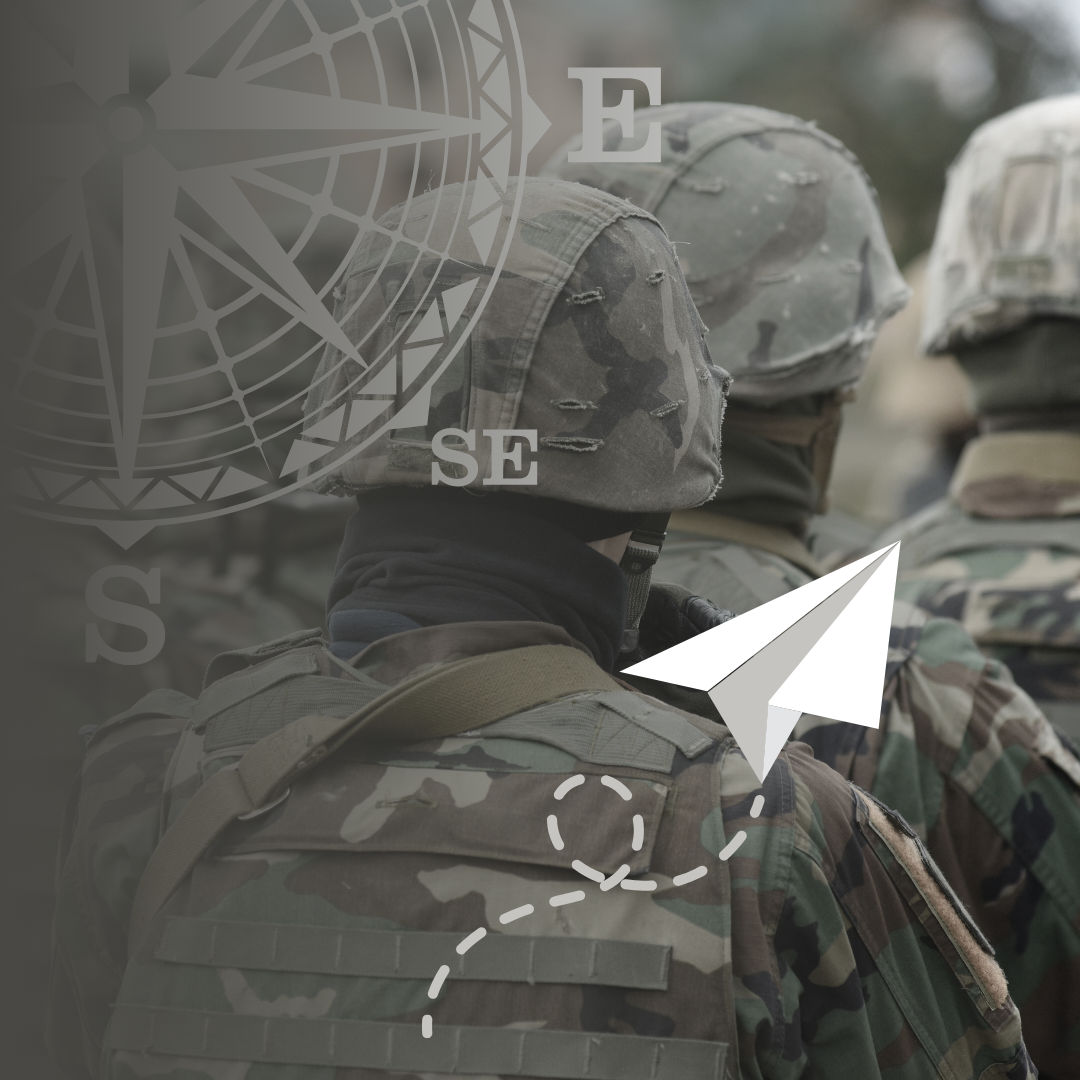Army MAPS Industry Day: What You Need to Know Now

The Army conducted an industry day on Friday, November 8, for the Marketplace for the Acquisition of Professional Services (MAPS) procurement. The purpose of the event was to summarize the MAPS objectives, scope, and timeline, review Sections L and M, host a live Q&A session, and conduct one-on-one meetings with industry to solicit feedback on the procurement.
Brief MAPS Overview
The MAPS’ objective is to provide the Program Executive Office (PEO) and Department of Defense (DOD) with knowledge-based support services and to support the Army’s enterprise infrastructure and infostructure goals with information technology (IT) services.
The MAPS scope is aligned with five domains and North American Industry Classification System (NAICS) codes.
- Technical: 541330
- Research, Development, Test, and Evaluation (RDT&E): 541715
- Management & Advisory: 561110
- High-Level IT: 541512
- Low-Level IT: 541519
The Army will award 100 MAPS contracts, or 20 per domain. Each domain will have a small business reserve. After contract awards, the Army will add NAICS to support task order requirements.
The Army unveiled the proposed timeline and noted it is subject to change.
- November 22, 2024: Questions and Comments Due (Link to SAM.gov form)
- February 2025: Solicitation Release
- March 2025: Proposal Due Date
- July 2025: Evaluations Complete
- August 2025: MAPS Award Date
Overview of Draft Sections L&M
Section L Requirements Overview
Offerors can propose in any of the five domains (listed above). For each domain, offerors must prepare the following documents. There is no down-select process, so offerors must submit all proposal documents simultaneously.
- Cover Letter
- Gate Criteria – Attachment 001
- Volume I – Systems, Rates and Certifications
- Volume II – Past Performance
- Volume III – Technical
Your cover letter is limited to one page and must include your point of contact, domain(s), company name, business size, and Commercial and Government Entity (CAGE) code.
Section M Evaluation Criteria
The proposal evaluation is in two parts: the Gate Criteria and the Scorecard.
- Part 1: Gate Criteria. Offerors must submit the following information with substantiating artifacts to pass this gate:
- Active Facility Clearance
- Approved Accounting System (not required for small business)
- Activity Certifications (ISO 9001:2015, CMMC Level 1, ISO/IEC 27001:2002, NIST SP 800-53 Rev 5, NIST SP 800-53B, NIST SP 800-37 Rev 2, CNSS Instruction 1253:2022, and NIST SP 800-171 Assessment)
- CPARS Ratings
- Active small business certification (required for small business)
If a company fails the initial gate criteria, the Army will not continue to evaluate its proposal.
- Part 2: Scorecard. Offerors must score highly to win
- SYSTEMS AND RATES
- Requirements: Offerors must provide evidence of their government-approved purchasing system, approved rates, approved estimating systems, and property management system.
- Evaluation Criteria: Offerors earn one point for two approved systems or rates and one additional point for three or more approved systems or rates. Offerors with CMMC Level 2 (or higher) and ANSI/EIA-approved systems will receive one point per certification.
- PAST PERFORMANCE
- Requirements:
- The Army will evaluate the past performance on:
- Relevance of NAICS alignment
- Contract recency
- Performance quality
- Offerors can submit a maximum of three qualifying projects (QPs) for each proposed domain. The QP must:
- Be a single contract (prime, subcontract, commercial, single task order, or task order under a Federal Supply Schedule)
- Have a minimum total value of $2M
- Have a minimum of one year of performance, but not over four years
- Have NAICS codes in one of the five domains
- Offerors must document the QP contract number, dollar value, and NAICS code. They must provide a brief description and CPARS with a mapping to the MAPS performance work statement (PWS). If an offeror doesn’t have CPARS, they can use a past performance questionnaire (PPQ).
- The Army will evaluate the past performance on:
- Evaluation Criteria:
- Past Performance
- 5 points for meeting all QP requirements
- 3 points for meeting 75-99% of QP requirements
- 2 points for meeting 50-74% of QP requirements
- 1 point for meeting 25-49% of QP requirements
- 0 points for meeting 0-24% of QP requirements
- NAICS Alignment and Recency
- 1 point if the QP aligns with the Domain NAICS
- 2 points if the QP has a period of performance (POP) within 2 years
- Performance Quality
- 3 points if three QPs CPARS/PPQs are satisfactory or above
- 2 points if two QPs CPARS/PPQs are satisfactory or above
- 1 point if one QP CPAR/PPQ is satisfactory or above
- Past Performance
- Requirements:
- TECHNICAL
- Recruitments
- Requirements: Offerors must describe how they can effectively recruit candidates for key positions. In addition, they must describe their human resources organization, how many recruiters they have, and their organizational structure.
- Evaluation Criteria (confidence rating):
- 3 points if the Army has high confidence
- 2 points if the Army has some confidence
- 1 point if the Army has low confidence
- Retention
- Requirements: Offerors must describe their processes, procedures, and mechanisms for supporting retention, including how they support internal development, mentorship, and retention.
- Evaluation Criteria: The Army uses the same confidence scale for recruitment to grade responses.
- Risk Management
- Requirements: Offerors must describe their processes, procedures, and mechanisms for identifying and managing risks. Offerors must describe their proactive risk management strategies, Organizational Conflict of Interest (OCI) Plan, and Risk Mitigation Plan.
- Evaluation Criteria: The Army grades responses using the same confidence scale used for recruitment and retention.
- Recruitments
- SYSTEMS AND RATES
Frequently Asked Questions
- FAQ 1: Why are there only 100 awardees? The Army says it was a collective decision designed to promote competition and save time and money.
- FAQ 2: Can offerors propose in multiple domains? The Army says, yes, offerors can propose across all domains.
- FAQ 3: Can an offeror propose using a single QP on multiple domains? The army says a single past performance can be used on multiple domains.
- FAQ 4: Will there be on- and off-ramping? The Army says yes.
- FAQ 5: What happens in the event of a tie? The Army is currently developing tie-breaker criteria.
- FAQ 6: Will there be small business reserves? Yes, the Army will award small business contracts in each domain, but a specific number has not yet been determined.
- FAQ 7: Should offerors submit their entire proposal at the same time, or must they pass the Gate Criteria first? The Army says offerors must submit their entire proposal at the same time.
Live Q&A
During the live Q&A session, the audience raised many thoughtful questions. In response, the Army urged them to submit their feedback via the Sam.gov form.
- The audience had many questions about compliance with technical requirements, NAICS codes, and prime and subcontractor responsibilities. The Army asked the offerors to submit their questions and feedback on the form contained on SAM.gov.
- The offerors requested a phased approach to contain proposal costs, and the Army said it would consider the comment.
- The audience asked several questions about domain-specific NAICS codes. The Army indicated that if an offeror had a QP outside the NAICS, it wouldn’t count. The Army said that if offerors had questions or comments about NAICS, they should submit them on the SAM.gov form.
- An offeror noted that the certification criteria for small businesses seemed restrictive. The Army said this was good feedback and requested that the offeror post the feedback on the SAM.gov comments form.
- The Army noted that the prime contractor is responsible for holding the certifications listed in the Gate Criteria—not a subcontractor.
Brief Analysis
The industry day clarified the program’s objectives, outlined the procurement’s scope, and offered specific details about proposal submission requirements in Sections L and M, providing a roadmap for potential offerors. The initial Gate Criteria stage ensures that only prime companies with robust security clearances, approved systems, and quality certifications can proceed, streamlining the selection process and maintaining a high standard for MAPS contracts. In particular, the MAPS procurement underscores the Army’s commitment to cybersecurity and regulatory compliance with a stringent list of activity certifications for eligible contractors. This approach minimizes risk and fosters accountability, particularly for primes who must hold all the certifications required to pass the Gate.
The industry day illustrated the Army’s openness to feedback. Through the live Q&A session and comments submitted via SAM.gov, the Army demonstrated its willingness to consider industry concerns—such as the cost implications of an all-in-one proposal submission and the certification criteria for small businesses. This feedback mechanism allows offerors to voice concerns about specific requirements, which may lead to refinements that improve both the proposal process and the overall quality of submissions.
Conclusion
The Army MAPS Industry Day served as a crucial information-sharing event, setting the stage for a complex but manageable procurement process. With clear standards, a focus on compliance, and open lines for industry feedback, the MAPS procurement represents a significant opportunity for both large and small businesses. To succeed, offerors must align closely with the Army’s outlined requirements, particularly those in Sections L and M, and demonstrate a high level of preparedness and adaptability. For contractors, meeting the MAPS criteria is not just about technical expertise but about proving their operational maturity and commitment to the Army’s mission.
If you need help supporting your MAPS proposal, Lohfeld Consulting offers capture managers, proposal managers, proposal writers, and graphic artists, complete our contact form.
Relevant Content
By Brenda Crist, Vice President at Lohfeld Consulting Group, MPA, CPP APMP Fellow
Lohfeld Consulting Group has proven results specializing in helping companies create winning captures and proposals. As the premier capture and proposal services consulting firm focused exclusively on government markets, we provide expert assistance to government contractors in Capture Planning and Strategy, Proposal Management and Writing, Capture and Proposal Process and Infrastructure, and Training. In the last 3 years, we’ve supported over 550 proposals winning more than $170B for our clients—including the Top 10 government contractors. Lohfeld Consulting Group is your “go-to” capture and proposal source! Start winning by contacting us at www.lohfeldconsulting.com and join us on LinkedIn, Facebook, and YouTube(TM).
Paperback or Kindle
10 steps to creating high-scoring proposals
by Bob Lohfeld
contributors Edited by Beth Wingate
Subscribe to our free ebrief
Teaming friends, frenemies, and enemies—12 tips to mitigate harmful effects
Did you know that contracting officers spend up to 20% of their time mitigating disputes between teaming partners? In an informal poll we conducted on LinkedIn last month, 40% of respondents classified their teaming partners as “frenemies” on their last bid.
Explore Further
- Advice (538)
- AI (24)
- APMP (18)
- Army MAPS Contracts (3)
- Business Development (288)
- Capture Management (262)
- Complex Technology Grants Services (25)
- Favorite Books (5)
- GenAI (3)
- Go-to-Market (27)
- Graphics (5)
- Lohfeld Books (2)
- NASA SEWP VI Contracts (2)
- Navy SeaPort-NxG Contracts (2)
- NIST MSE Grants (1)
- NIST NAPMP Grants (2)
- Past Performance (63)
- Post-submission Phase (14)
- Pre-RFP Preparation (260)
- Proposal Management (331)
- Proposal Production (72)
- Proposal Reviews (37)
- Proposal Writing (102)
- Pursuit Phase (108)
- Research Report (4)
- Resources (63)
- Tools & Tips (413)
- Training (13)
- Uncategorized (223)

Sign Up for INSIGHTS and Download your FREE book
We'd love to help you with your proposals. Enjoy our complimentary Lohfeld Consulting Group Capture & Proposal Insights & Tips book with your FREE subscription to our Insights Newsletter.
GET YOUR FREE BOOK



